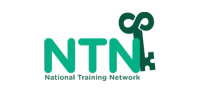Every school year brings new priorities, challenges, and opportunities. For math educators and school leaders, staying ahead of these trends helps you make smarter decisions for your teachers and students. Here are five education trends as we prepare to go into 2026, and what they mean for math instruction.
Trend 1: Smaller Class Sizes
New state and district mandates are reducing class sizes in many schools. While this can improve student engagement, it also means more new hires stepping into classrooms. For math, that often means less experienced teachers leading critical subjects. Supporting them with targeted PD is more important than ever.
Trend 2: The Rise of AI Tools
From tutoring chatbots to adaptive assessments, AI is finding its way into classrooms. But AI works best when teachers know how to use it as a complement, not a replacement, for strong instruction. Professional development can help teachers integrate technology while still focusing on math reasoning and confidence.
Trend 3: Acceleration for Learning Gaps
Schools continue to face the challenge of unfinished learning. Many districts are shifting from “remediation” to acceleration strategies. For math teachers, that means embedding grade-level content while addressing gaps in real time. Effective routines, quick checks, and scaffolding are critical.
Trend 4: Teacher Retention as a Priority
Leaders know that constant turnover is costly for schools and students. Investing in teacher confidence early in the year is becoming a core retention strategy. When teachers feel supported, they are more likely to stay and thrive.
Trend 5: SEL Meets Math
More schools are weaving social-emotional learning into all subjects. In math, that means building student confidence, persistence, and a growth mindset. Teachers need strategies to make math feel like a space where students can try, fail, and try again.Trends come and go, but one constant is the need for math classrooms where teachers feel confident and students feel capable. At NTN, we help schools prepare for what’s next with practical PD and tools like MathKEYmatics that support both teachers and leaders.


